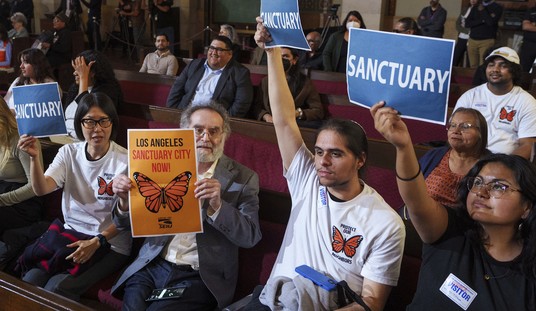It is has been almost two years since President Trump ordered the deployment of active-duty troops to the U.S.-Mexico border in response to multiple migrant caravans making their way to the United States, threatening to overwhelm U.S. Customs and Border Protection.
At the time, and still today, the Department of Defense has defended the deployment by saying the Department of Homeland Security had requested additional manpower and resources to help address the massive influx of people. On a November tour to the southwest border, I was able to ask CBP agents about the impact the deployment has had on their ability to protect the border.
At the beginning of the military's deployment, most of its duties consisted of reinforcing existing barriers and ports of entry. The barbed wire that was installed onto walls or alongside barriers last year still stands in many of the areas.


El Paso Sector's wall with barbed wire installed by American troops.
Today, most of the ways the U.S. military supports CBP is through taking over responsibilities that frees up agents so that they are able to be on the border, such as conducting surveillance and providing transportation.
Recommended
Even something as mundane, yet necessary, as transporting vehicles in need of repair from stations throughout the sector to their main motor pool and then repairing said vehicles is something that is typically done by CBP agents. This can take agents away from the border all day as some stations are up to 70 miles away. In the Laredo Sector, that task has now been taken over by military members who work in motor transportation.
Some of the military's aviation assets are being used to assist with rescues and landing CBP personnel on the ground to lessen response times to illegal crossings.
CBP agents in each of the sectors I visited stressed to me the military's support allows greater coverage along the border and decreases response time. No member of the military is used in law enforcement roles as they are prohibited from conducting such tasks under federal law.
In the San Diego Sector, Marines are positioned on hills and observation posts, while National Guardsmen conduct surveillance in the El Paso Sector. While touring Laredo, there were two soldiers attached to the 10th Mountain Division near the Rio Grande River. One was in an SUV while the other watched over the river in a mobile tower.

U.S. Army soldiers conducting surveillance in the Laredo Sector.
Another side effect of having military members work side-by-side with CBP agents is that they have seen an increase in interest to join CBP.
There is roughly 2,600 National Guard personnel supporting the border mission, with the mission costing around $103 million in FY18 and $275 million in FY19. When the deployment first began, Rep. Adam Smith (D-WA), who sits on the House Armed Services Committee and is currently its chairman, heavily criticized the Trump administration for the "political stunt."
"The reports that President Trump is planning to withdraw some of the troops he sent to the border two weeks ago indicate just how empty, demagogic and racially motivated this political stunt was," Smith said in a statement in November 2018. "It appears to be an admission that there was no justification for the mission in the first place. It was not a respectful use of our military to take service members away from their duties and send them to the border as politicized props, and President Trump should not have done it."
During a briefing in Laredo, Assistant Chief Patrol Agent Casey Adams told me how the U.S. military has helped CBP carry out its primary responsibility.
"Our mission has not changed, it's increased," Adams said, pointing to the years of raise in foot traffic and narcotics smuggling. "So with National Guard or DoD here supporting us in these secondary roles really help us get to doing the day to day of guarding the border. Without them, it hurts us."
The DoD announced on Thursday it will be fulfilling a new request from the Department of Homeland Security to add more miles of fencing on the U.S.-Mexico border to specifically block drug-smuggling corridors.
"Last month, we received a new request from the Department of Homeland Security asking for assistance in blocking drug-smuggling corridors on Federal land along the southern border of the United States. In response, the Secretary of Defense authorized support of $3.8B to build approximately 177 miles of fencing that will help to protect our borders. We will continue to support DHS and other agencies as needed to keep our homeland is secure," DoD spokesman Lt. Col. Chris Mitchell said.
Despite the 2018 migrant caravans failing as a whole to enter the U.S., more amassed in 2019 and 2020. But due to President Trump's deal with Mexico that was made after threatening tariffs, the Mexican government has taken more steps to prevent large caravans from reaching U.S. borders. Mexico created its own National Guard and now has asylum seekers, who are trying to enter the U.S., stay in the country, under the "Remain in Mexico" policy, as their claims are processed.

























